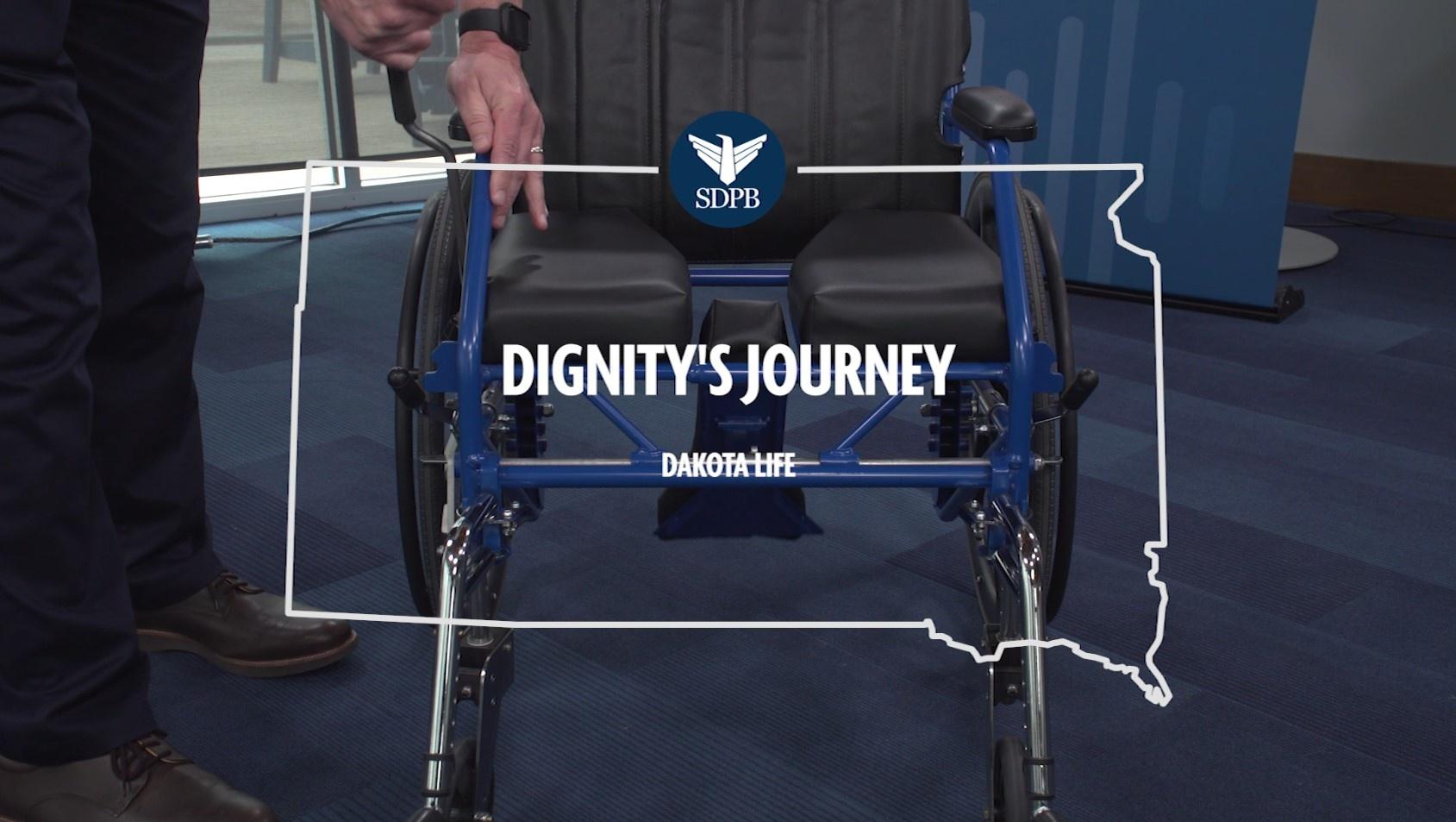Greg Johnson’s mom is in hospice care bed ridden. The need for a wheelchair that would allow her to not have to be lifted by her husband multiple times throughout the day was needed.
Johnson: Actually, to transfer herself from the wheelchair to the toilet and back again. So, you know, how to help her with that. So dad didn’t have to come and handle her many times during the day onto the toilet and back again.”
In 2005, Johnson began work on a new wheelchair design with a seat that drops. He named it “Dignity” – removing the need for a physical transfer to use the toilet.
Johnson: I could kind of sketch it, but actually invent it and engineer it was way beyond my abilities.
But, he knew someone who could.
Johnson: Quentin Larson – an old friend of mine from Campbell County – and he set to work and made the first prototype, and kind of the rest is history.
Larson and Johnson secured several patents and formed Dignity Medical Devices in 2006.
Johnson: “It was a strange ten years in a way because we waited so long for the patent to be approved and then even longer for FDA approval, medical devices are complicated things. Even a Class 1 medical device,” Johnson said. “Like this wheelchair takes a lot of time to get approvals. And just when we’re ready to launch and had our first pretty good order from a major skilled care provider here in South Dakota, the Great Recession hit and all capital was put on hold. That order was cancelled.”
Johnson calls his entrepreneurial adventure a complex dance. He and his board knew they had a solid idea. But after nearly a decade of work, the Dignity board voted to discontinue its efforts to launch the Dignity chair. This left Johnson and Larson with their patents and the need to find a new group to put new resources and energy into the project. They wanted to make sure it all stayed in South Dakota.
Gary Popkes heard the story of the Dignity wheelchair. He’s worked mainly in banking and trust for nearly 30 years, but received manufacturing experience early in his career working with an injection mold building firm in Connecticut. Popkes believed he could push the project ahead with local production to keep the Dignity wheelchair in South Dakota. In 2019, Popkes and his wife formed a new company Majestic Medical LLC. They purchased the patents – and then made some improvements in the design. But not many.
Popkes: We made some changes to some of the components for durability and then also for additional corrosion resistance. Mainly due to the environment that is going to be in on a regular basis. So, we swapped out and added in a number of stainless steel parts.
The Dignity AllDay 400 wheelchair is in production and now ready for online orders. Those who are wanting to stay in their own homes longer and safely, fully understand the benefits of the Dignity chair.
But Popkes says there’s a challenge. Assisted living and nursing facilities are harder to convince. The new wheelchair requires a change in protocol and care requirements. There’s even been a study on that difference.
Popkes: it took two aides to take a person to the bathroom and transporting back and forth off the toilet and the total time with the two aides was over 45 minutes. With the Dignity wheelchair they got it down to one aide and less than seven minutes. So you’re not only reducing the amount of time it takes to take a person to the bathroom.
Popkes says the Dignity wheelchair also reduces back injury to caregivers.
Popkes: So it not only helps the person maintain their dignity, but also the caregivers as well.
Popkes says they’ve overcome plenty of roadblocks in the past 16 years - a recession, a pandemic, changes in FDA patent requirements, and other approval delays. They now have 45 wheelchairs in production at a Brookings manufacturing plant and steps are being taken to make the chair available on Amazon Prime shipping for individuals across the country.



